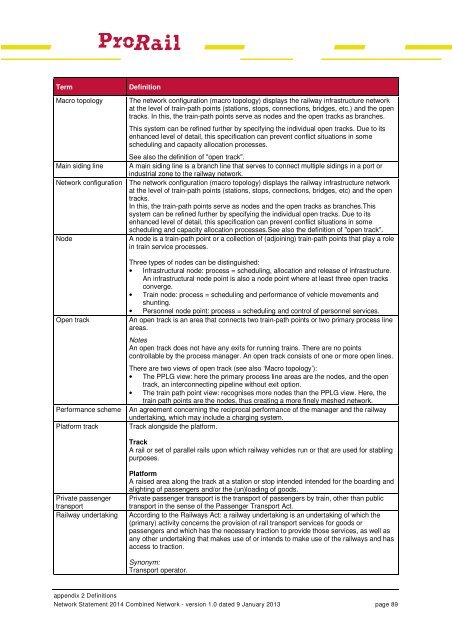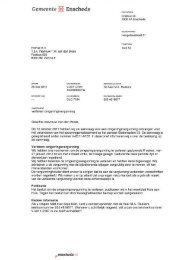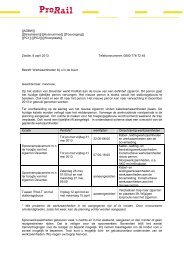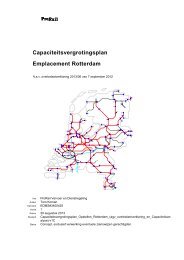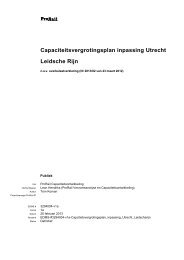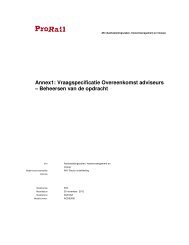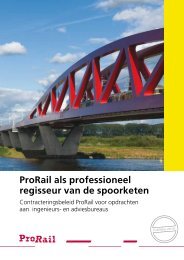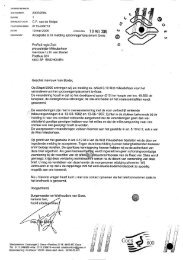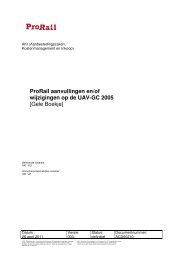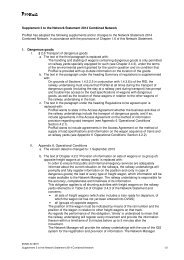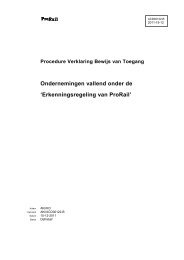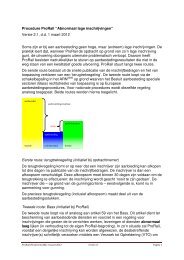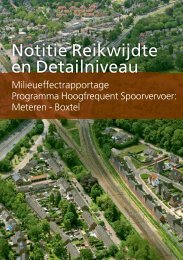Network Statement 2014 - ProRail
Network Statement 2014 - ProRail
Network Statement 2014 - ProRail
- No tags were found...
You also want an ePaper? Increase the reach of your titles
YUMPU automatically turns print PDFs into web optimized ePapers that Google loves.
TermMacro topologyDefinitionThe network configuration (macro topology) displays the railway infrastructure networkat the level of train-path points (stations, stops, connections, bridges, etc.) and the opentracks. In this, the train-path points serve as nodes and the open tracks as branches.This system can be refined further by specifying the individual open tracks. Due to itsenhanced level of detail, this specification can prevent conflict situations in somescheduling and capacity allocation processes.See also the definition of "open track".Main siding line A main siding line is a branch line that serves to connect multiple sidings in a port orindustrial zone to the railway network.<strong>Network</strong> configuration The network configuration (macro topology) displays the railway infrastructure networkat the level of train-path points (stations, stops, connections, bridges, etc) and the opentracks.In this, the train-path points serve as nodes and the open tracks as branches.Thissystem can be refined further by specifying the individual open tracks. Due to itsenhanced level of detail, this specification can prevent conflict situations in somescheduling and capacity allocation processes.See also the definition of "open track".NodeA node is a train-path point or a collection of (adjoining) train-path points that play a rolein train service processes.Open trackPerformance schemePlatform trackThree types of nodes can be distinguished:• Infrastructural node: process = scheduling, allocation and release of infrastructure.An infrastructural node point is also a node point where at least three open tracksconverge.• Train node: process = scheduling and performance of vehicle movements andshunting.• Personnel node point: process = scheduling and control of personnel services.An open track is an area that connects two train-path points or two primary process lineareas.NotesAn open track does not have any exits for running trains. There are no pointscontrollable by the process manager. An open track consists of one or more open lines.There are two views of open track (see also ‘Macro topology’):• The PPLG view: here the primary process line areas are the nodes, and the opentrack, an interconnecting pipeline without exit option.• The train path point view: recognises more nodes than the PPLG view. Here, thetrain path points are the nodes, thus creating a more finely meshed network.An agreement concerning the reciprocal performance of the manager and the railwayundertaking, which may include a charging system.Track alongside the platform.TrackA rail or set of parallel rails upon which railway vehicles run or that are used for stablingpurposes.Private passengertransportRailway undertakingPlatformA raised area along the track at a station or stop intended intended for the boarding andalighting of passengers and/or the (un)loading of goods.Private passenger transport is the transport of passengers by train, other than publictransport in the sense of the Passenger Transport Act.According to the Railways Act: a railway undertaking is an undertaking of which the(primary) activity concerns the provision of rail transport services for goods orpassengers and which has the necessary traction to provide those services, as well asany other undertaking that makes use of or intends to make use of the railways and hasaccess to traction.Synonym:Transport operator.appendix 2 Definitions<strong>Network</strong> <strong>Statement</strong> <strong>2014</strong> Combined <strong>Network</strong> - version 1.0 dated 9 January 2013 page 89


